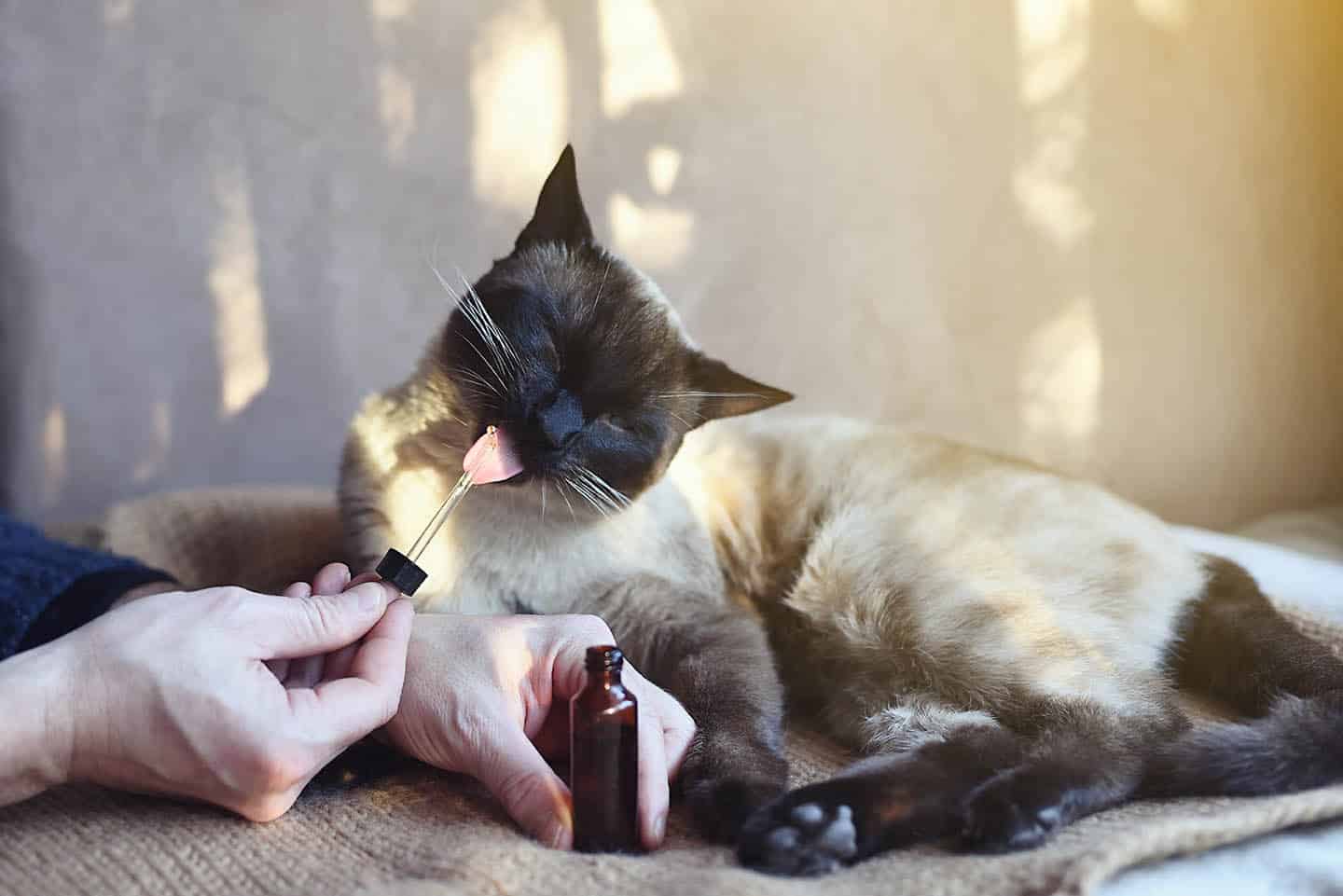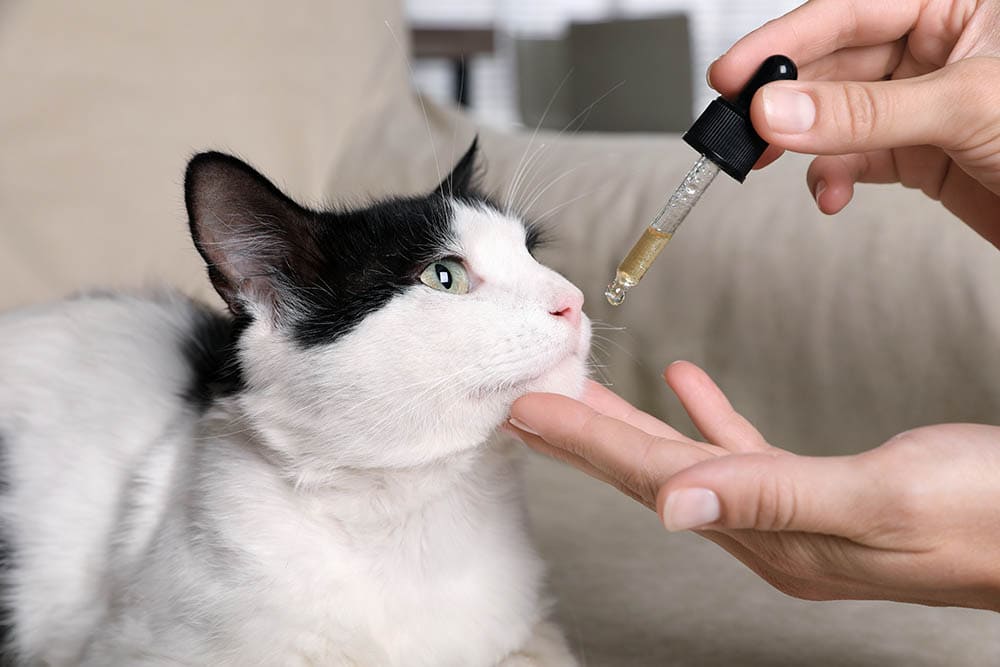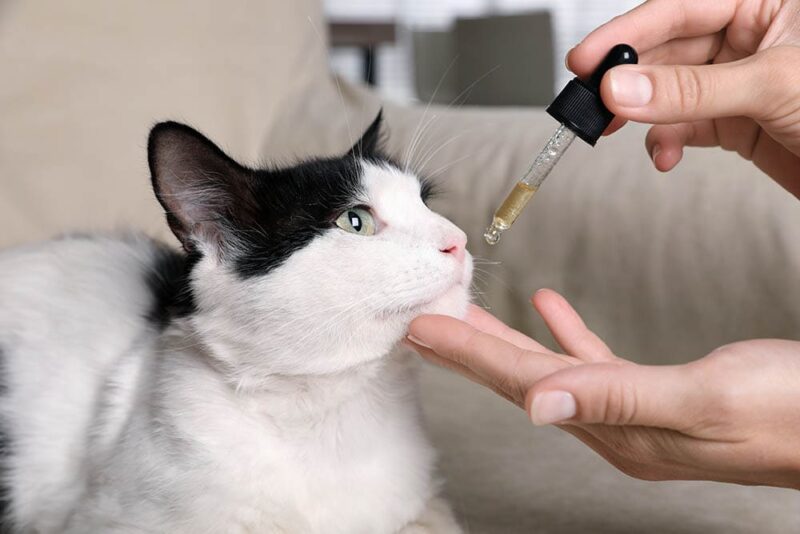When you think about everything a good cat owner should do for their pet, taking care of their health and happiness is at the top of the list. You want to ensure that your feline is fed high-quality food, has plenty of clean water, and is given lots of love and attention. You also want to make sure that your cat gets exercise and regular check-ups. You want to give your cat the best life!
However, there can be times when your cat is experiencing discomfort or stress that is harder to alleviate with loving attention alone. That is why some cat owners give their felines CBD oil for various issues their pets experience. Hearing “CBD oil” may raise some questions and concerns among cat owners since giving cats CBD oil is not very common. However, more people are learning about the oil’s benefits for their cats. This article will give you more information about CBD oil and the five best ways to administer it.
What Is CBD Oil?
CBD (cannabidiol) is a chemical found in the cannabis plant. CBD is different from the chemical tetrahydrocannabinol, known as THC. THC is the main component in marijuana that gives people a “high” or psychoactive reaction. However, CBD is not the same as THC.
For some people, CBD has shown effectiveness in treating seizures. Many people also take CBD oil to help reduce anxiety and mild pains. CBD products are also legal in all 50 states if they contain less than 0.3% THC.

Can CBD Oil Be Beneficial to Cats?
Yes, CBD oil can be beneficial to cats. CBD oil has the potential to help cats with ailments that people experience, such as stress, anxiety, and pain from inflammation. However, it is important to know that CBD oil is not a cure for illnesses or physical pains. CBD oil should not replace medical treatments from a vet. Instead, CBD oil should be used to provide comfort and reduce stress for your cat.
How to Give CBD Oil to Your Cat
Once you have consulted with your vet about your cat and found the right CBD oil product to try, you want to ensure you correctly administer the oil. Like many medications and supplements, the amount given is based on body weight. A small cat will need less CBD oil than a larger cat. After you know the dosage for your cat, try out one of these five methods to administer the oil.

- Put the oil in their empty food bowl. Sardine-based CBD oil is quite appealing to cats, so all you might need to do is put the drops in their empty food bowl. Most cats will lick the bowl clean!
- Add the CBD oil to a bit of food. If the oil is coconut-based, some cats might not like the taste of coconut oil on its own. Add the dosage to a small amount of food or tuna juice. CBD oil is more effective on an empty stomach, so only mix it with a small amount of food or tuna juice.
- Add the CBD oil to some cat treats. Cat treats are small enough that they will not reduce the effects of CBD oil. Try putting the oil on your cat’s favorite snack. There are even CBD-infused treats that you can use as a way to give your cat CBD easily.
- Put some of the oil on their paws. Cats pride themselves on staying clean. If the CBD oil is put on their paws, cats will naturally want to lick it off.
- Directly feed it to the cat. Depending on the oil, your cat might lick it off the dropper when presented to them. This is an easy way to give your cat the oil, but you want to be aware of how much they are licking when doing this method. Or you can put the dosage into your hand and let the cat lick it. Avoid forcing the dropper into your cat’s mouth.
Conclusion
CBD oil is a safe alternative for treating cats with stress or anxiety. While it is not a cure for physical and mental issues that your cat might experience, CBD oil can help make your pet more comfortable and relaxed overall. After speaking with your vet, consider the benefits CBD oil has for your cat. A small amount could make all the difference for your favorite feline!
Featured Image Credit: New Africa, Shutterstock













